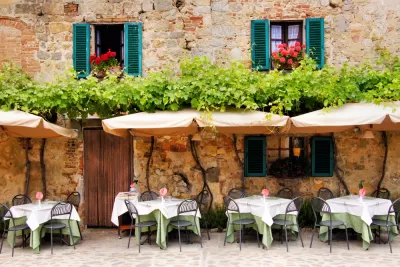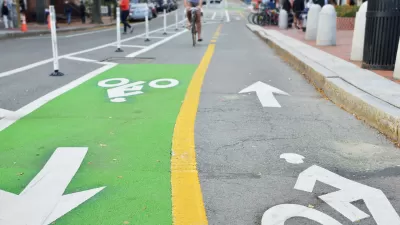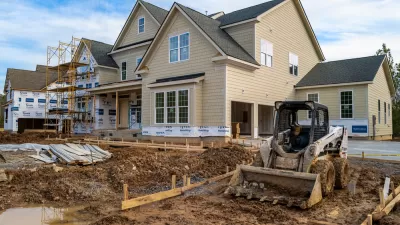In a review of Jonathan F.P. Rose's new book, 'The Well-Tempered City,' Chuck Wolfe enthusiastically endorses Rose's refreshing world view.

In a Huffington Post review, Chuck Wolfe describes how Jonathan F.P. Rose's new book, The Well-Tempered City, captures a life’s worth of experience and thinking of the prominent New York developer and philanthropist, and how Rose's seven years of applied work on the book is readily apparent.
Rose’s inspirational theme is Johann Sebastian Bach’s then-novel, 18th century system of tuning musical instruments in The Well-Tempered Clavier. He takes Bach’s premise of aligning human ideals with natural harmony, and applies it to urban progress and potential such as greening cities today.
Wolfe describes Rose's reliance on a Portland Sustainability Institute (now “Ecodistrict‘) graphic to show such ideals and harmony, and to explain Portland residents’ aspirations for a green, accessible and safe city, with places where people will want to spend their time:
But here’s a pleasant caveat: Rose’s points stem not from a developer’s “green-washing,” but from well-studied explanations in the book about humans, and how they are wired, dating from our common ancestors who evolved millions of years ago... After reading The Well-Tempered City, and speaking at length with Rose, I emerged with excitement and optimism, because with simple attention to his humanistic base, and concepts of vision, coherence and compassion, I saw how idealism and implementation merged. As a developer, Rose applied “the developer’s test” to his book’s ideas and found them workable—-and so do I.
With a volume full of implementation examples, he continues, it is easy to understand why, citing a key paragraph from the book's Introduction:
Imagine a city with Singapore’s social housing, Finland’s public education, Austin’s smart grid, the biking culture of Copenhagen, the urban food production of Hanoi, Florence’s Tuscan regional food system, Seattle’s access to nature, New York City’s arts and culture, Hong Kong’s subway system, Curitiba’s bus rapid transit system, Paris’s bike-share program, London’s congestion pricing, San Francisco’s recycling system, Philadelphia’s green stormwater program, Seoul’s Cheonggyecheon River restoration project, Windhoek’s wastewater recycling system, Rotterdam’s approach to living with rising seas, Tokyo’s health outcomes, the happiness of Sydney, the equality of Stockholm, the peacefulness of Reykjavík, the harmonic form of the Forbidden City, the market vitality of Casablanca, the cooperative industrialization of Bologna, the innovation of Medellín, the hospitals of Cleveland, and the livability of Vancouver. Each of these aspects of a well-tempered city exists today and is continually improving. Each evolved in its own place and time and is adaptable and combinable. Put them together as interconnected systems and their metropolitan regions will evolve into happier, more prosperous, regenerative cities.
In other words, Wolfe concludes, "if you worry that a lofty fascination with classical music is not the recipe for mediating concerns about urban density, affordability, access to public transit or climate change, fear not, because it’s all there."
FULL STORY: Why ‘The Well-Tempered City’ is a One-Stop, Urban Epic

Study: Maui’s Plan to Convert Vacation Rentals to Long-Term Housing Could Cause Nearly $1 Billion Economic Loss
The plan would reduce visitor accommodation by 25,% resulting in 1,900 jobs lost.

North Texas Transit Leaders Tout Benefits of TOD for Growing Region
At a summit focused on transit-oriented development, policymakers discussed how North Texas’ expanded light rail system can serve as a tool for economic growth.

Why Should We Subsidize Public Transportation?
Many public transit agencies face financial stress due to rising costs, declining fare revenue, and declining subsidies. Transit advocates must provide a strong business case for increasing public transit funding.

How to Make US Trains Faster
Changes to boarding platforms and a switch to electric trains could improve U.S. passenger rail service without the added cost of high-speed rail.

Columbia’s Revitalized ‘Loop’ Is a Hub for Local Entrepreneurs
A focus on small businesses is helping a commercial corridor in Columbia, Missouri thrive.

Invasive Insect Threatens Minnesota’s Ash Forests
The Emerald Ash Borer is a rapidly spreading invasive pest threatening Minnesota’s ash trees, and homeowners are encouraged to plant diverse replacement species, avoid moving ash firewood, and monitor for signs of infestation.
Urban Design for Planners 1: Software Tools
This six-course series explores essential urban design concepts using open source software and equips planners with the tools they need to participate fully in the urban design process.
Planning for Universal Design
Learn the tools for implementing Universal Design in planning regulations.
City of Santa Clarita
Ascent Environmental
Institute for Housing and Urban Development Studies (IHS)
City of Grandview
Harvard GSD Executive Education
Toledo-Lucas County Plan Commissions
Salt Lake City
NYU Wagner Graduate School of Public Service





























